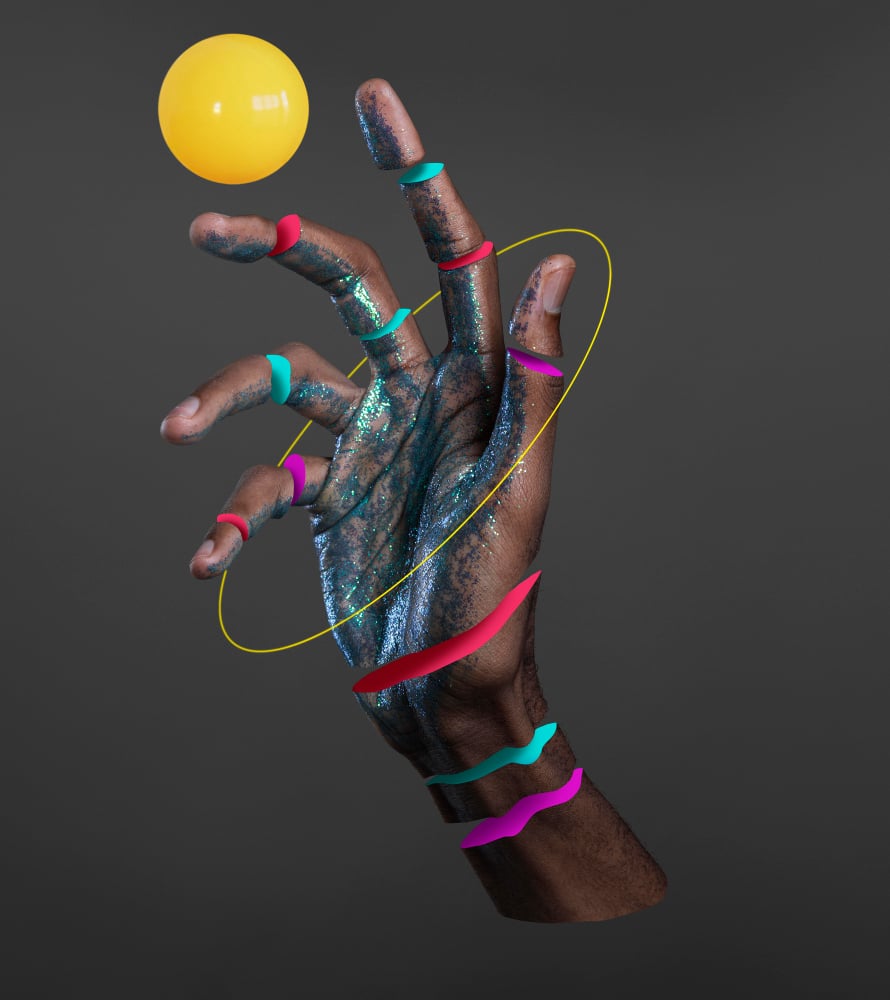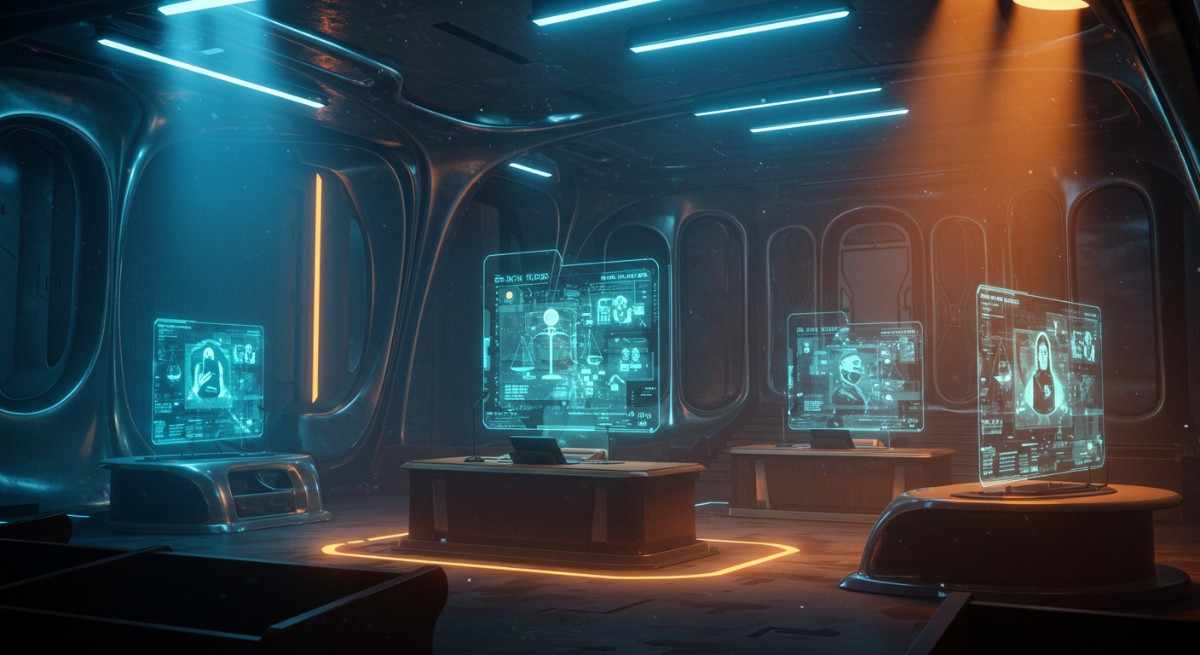The intersection of art and technology has led us into a captivating realm where AI-generated art challenges conventional notions of creativity and authorship. A recent ruling by a US court in Washington, D.C. has ignited a debate: Can a work of art created solely by artificial intelligence be eligible for copyright protection under US law? Let’s delve into the details of this intriguing case and explore the implications it holds for the evolving landscape of intellectual property.
The court’s decision
In a decision that echoes through the corridors of the digital age, US District Judge Beryl Howell firmly established a precedent. The ruling states that a work of art generated entirely by AI, without any human input, is not eligible for copyright protection under current US law. This verdict stemmed from the rejection by the Copyright Office of an application filed by computer scientist Stephen Thaler, on behalf of his AI system known as DABUS.
Human Authors and Copyrights
The heart of the matter revolves around the essence of authorship. Judge Howell’s ruling underlines that only works produced by human authors are entitled to copyright protection. The decision, aligned with the Copyright Office’s stance, rejects the notion that AI systems can be considered authors in the legal sense. This judgment affirms the historical significance of human creativity as the cornerstone of copyright law.
Read about — > LLM for Lawyers, enrich your precedents with the use of AI
The DABUS controversy
Stephen Thaler, the innovator behind the DABUS AI system, sought to challenge this status quo. Thaler’s attempts to secure US patents for inventions attributed to DABUS were met with resistance, mirroring his quest for copyright protection. His persistence extended to patent applications filed in various countries, including the UK, South Africa, Australia, and Saudi Arabia, with mixed outcomes.
A dissenting voice and the road ahead
Thaler’s attorney, Ryan Abbott, expressed strong disagreement with the court’s ruling and vowed to appeal the decision. Despite this, the Copyright Office has stood its ground, asserting that the ruling aligns with their perspective. The fast-evolving domain of generative AI has introduced unprecedented questions about intellectual property, challenging the very foundation of copyright law.
AI and the artistic toolbox
As artists increasingly incorporate AI into their creative arsenals, the landscape of copyright law is set to encounter uncharted territories. Judge Howell noted that this evolving dynamic presents “challenging questions” for copyright law, indicating a shifting paradigm in the realm of creativity. While the intersection of AI and art is revolutionary, the court’s ruling underscores that this specific case is more straightforward than the broader issues AI will raise.
The case in question
At the center of this legal discourse is Thaler’s application for copyright protection for “A Recent Entrance to Paradise,” a piece of visual art attributed to his AI system, DABUS. The Copyright Office’s rejection of this application in the previous year sparked the legal battle. Thaler contested the rejection, asserting that AI-generated works should be entitled to copyright protection as they align with the constitution’s aim to “promote the progress of science and useful arts.”
Authorship as a Bedrock requirement
Judge Howell concurred with the Copyright Office, emphasizing the pivotal role of human authorship as a “bedrock requirement of copyright.” She reinforced this stance by drawing on centuries of established understanding, reiterating that creativity rooted in human ingenuity remains the linchpin of copyright protection.
Navigating Generative AI: Mitigating Intellectual Property challenges in law and creativity
Generative Artificial Intelligence (AI) represents a groundbreaking paradigm in AI research, enabling the creation of novel content by leveraging existing data. This innovative approach involves the acquisition of knowledge from vast datasets, which the generative AI model then ingeniously utilizes to fabricate entirely new examples.
For instance, an adept generative AI model, well-versed in legal jargon from a corpus of legal documents, exhibits the remarkable ability to craft entirely novel legal documents.
Current applications of Generative AI in law
There are a number of current applications of generative AI in law. These include:
- Legal document automation and generation: Generative AI models can be used to automate the creation of legal documents. For example, a generative AI model could be used to generate contracts, wills, or other legal documents.
- Natural language processing for contract analysis: Generative AI models can be used to analyze contracts. For example, a generative AI model could be used to identify the clauses in a contract, determine the meaning of those clauses, and identify any potential problems with the contract.
- Predictive modeling for case outcomes: Generative AI models can be used to predict the outcome of legal cases. For example, a generative AI model could be used to predict the likelihood of a plaintiff winning a case, the amount of damages that a plaintiff might be awarded, or the length of time it might take for a case to be resolved.
- Legal chatbots and virtual assistants: Generative AI models can be used to create legal chatbots and virtual assistants. These chatbots and assistants can be used to answer legal questions, provide legal advice, or help people with legal tasks.
- Improving legal research and information retrieval: Generative AI models can be used to improve legal research and information retrieval. For example, a generative AI model could be used to generate summaries of legal documents, identify relevant legal cases, or create legal research reports.
Generative AI and copyright law
In 2022, a groundbreaking event occurred at the Colorado State Fair’s art competition when an AI-generated artwork claimed victory. The artist, Jason Allen, utilized a generative AI system called Midjourney, which had been trained on a vast collection of artworks from the internet. Despite the AI’s involvement, the creative process was far from automated; Allen spent approximately 80 hours and underwent nearly 900 iterations to craft and refine his submission.
The triumph of AI in the art competition, however, sparked a heated online debate, with one Twitter user decrying the perceived demise of authentic artistry.
AI’s revolutionary impact on creativity
Comparing the emergence of generative AI to the historical introduction of photography in the 1800s, we find that both faced challenges to be considered genuine art forms. Just as photography revolutionized artistic expression, AI’s impact on creativity is profound and transformative.

A major concern in the debate revolves around copyright laws, which were designed to promote and protect artistic creativity. However, the advent of generative AI has blurred traditional notions of authorship and copyright infringement. The use of copyrighted artworks for training AI models raises ethical questions even before the AI generates new content.
AI transforming prior artwork
While AI systems cannot legally own copyrights, they possess unique capabilities that can mimic and transform prior artworks into new outputs, making the issue of ownership more intricate. As AI-generated outputs often resemble works from the training data, determining rightful ownership becomes a challenging legal task. The degree of meaningful creative input required to claim ownership in generative AI outputs remains uncertain.
To address these concerns, some experts propose new regulations that protect and compensate artists whose work is used for AI training. These proposals include granting artists the option to opt out of their work being used for generative AI training or implementing automatic compensation mechanisms.
Additionally, the distinction between outputs that closely resemble or significantly deviate from training data plays a crucial role in the copyright analysis. Outputs that resemble prior works raise questions of copyright infringement, while transformative outputs might claim a separate ownership.
Ultimately, generative AI offers a new creative tool for artists and enthusiasts alike, akin to traditional artistic mediums like cameras or painting brushes. However, its reliance on training data complicates tracing creative contributions back to individual artists. The interpretation and potential reform of existing copyright laws will significantly impact the future of creative expression and the rightful ownership of AI-generated art.
Why can Generative AI give rise to intellectual property issues?
While generative AI is a recent addition to the technology landscape, existing laws have significant implications for its application. Courts are currently grappling with how to interpret and apply these laws to address various issues that have arisen with the use of generative AI.
In a case called Andersen v. Stability AI et al., filed in late 2022, a class of three artists sued multiple generative AI platforms, alleging that these AI systems used their original works without proper licenses to train their models. This allowed users to generate works that were too similar to the artists’ existing protected works, potentially leading to unauthorized derivative works. If the court rules in favor of the artists, the AI platforms may face substantial infringement penalties.
Similar cases in 2023 involve claims that companies trained AI tools using vast datasets of unlicensed works. Getty, a renowned image licensing service, filed a lawsuit against the creators of Stable Diffusion, claiming improper use of their watermarked photograph collection, thus violating copyright and trademark rights.
These legal battles are centered around defining the boundaries of “derivative work” under intellectual property laws. Different federal circuit courts may interpret the concept differently, making the outcomes of these cases uncertain. The fair use doctrine, which permits the use of copyrighted material for transformative purposes, plays a crucial role in these legal proceedings.
Technological advancements vs copyright law – Who won?
This clash between technology and copyright law is not unprecedented. Several non-technological cases, such as the one involving the Andy Warhol Foundation, could also influence how generative AI outputs are treated. The outcome of the case brought by photographer Lynn Goldsmith, who licensed an image of Prince, will shed light on whether a piece of art is considered sufficiently different from its source material to be deemed “transformative.”
All this legal uncertainty poses challenges for companies using generative AI. Risks of infringement, both intentional and unintentional, exist in contracts that do not address generative AI usage by vendors and customers. Businesses must be cautious about using training data that might include unlicensed works or generate unauthorized derivative works not covered by fair use, as willful infringement can lead to substantial damages. Additionally, there is a risk of inadvertently sharing confidential trade secrets or business information when inputting data into generative AI tools.
A way forward for AI-generated art
As the use of generative AI becomes more prevalent, companies, developers, and content creators must take proactive steps to mitigate risks and navigate the evolving legal landscape. For AI developers, ensuring compliance with intellectual property laws when acquiring training data is crucial. Customers of AI tools should inquire about the origins of the data and review terms of service to protect themselves from potential infringement issues.
Developers must also work on maintaining the provenance of AI-generated content, providing transparency about the training data and the creative process. This information can protect business users from intellectual property claims and demonstrate that AI-generated outputs were not intentionally copied or stolen.
Content creators should actively monitor their works in compiled datasets and social channels to detect any unauthorized derivative works. Brands with valuable trademarks should consider evolving trademark and trade dress monitoring to identify stylistic similarities that may suggest misuse of their brand.
Businesses should include protections in contracts with generative AI platforms, demanding proper licensure of training data and broad indemnification for potential infringement issues. Adding AI-related language to confidentiality provisions can further safeguard intellectual property rights.
Going forward, content creators may consider building their own datasets to train AI models, allowing them to produce content in their style with a clear audit trail. Co-creation with followers can also be an option for sourcing training data with permission.



